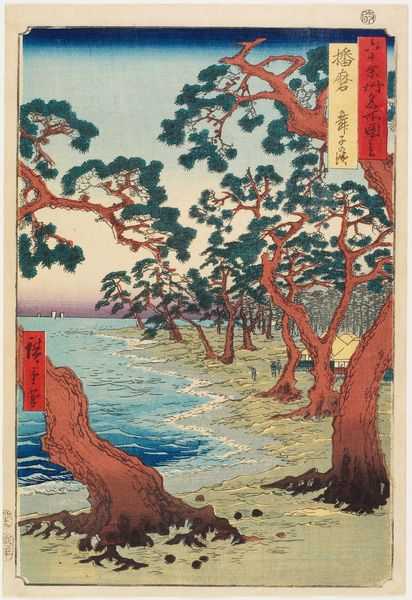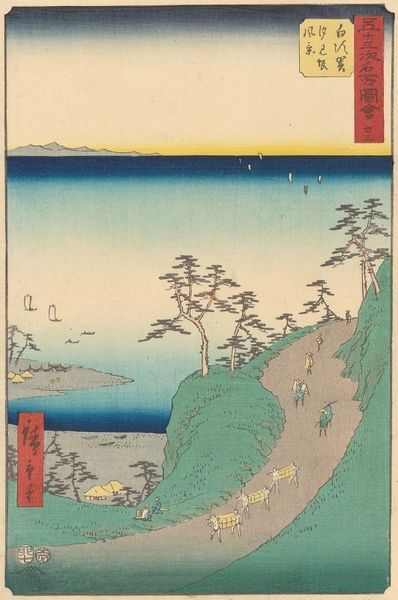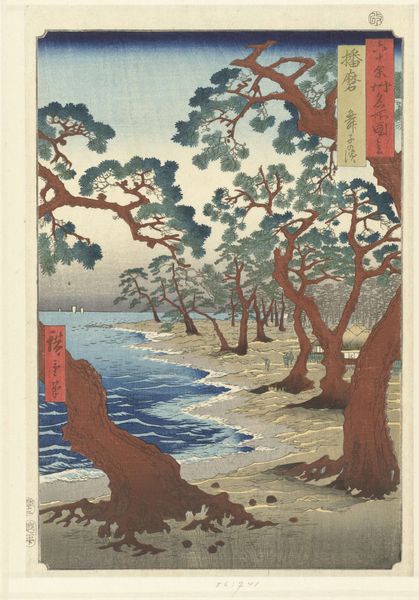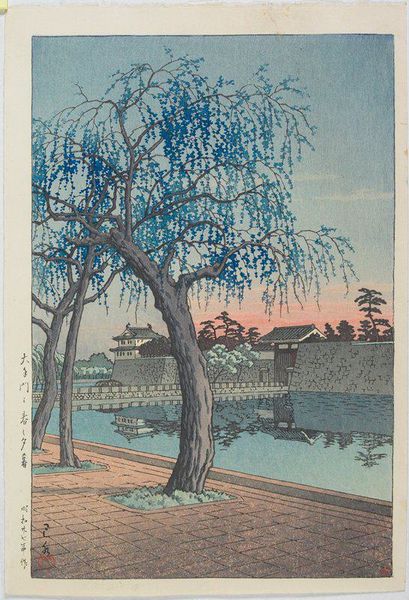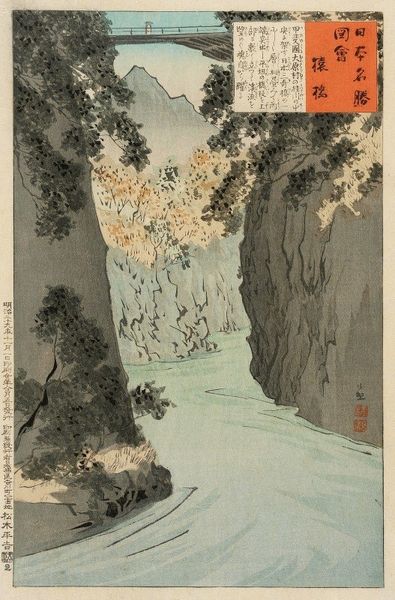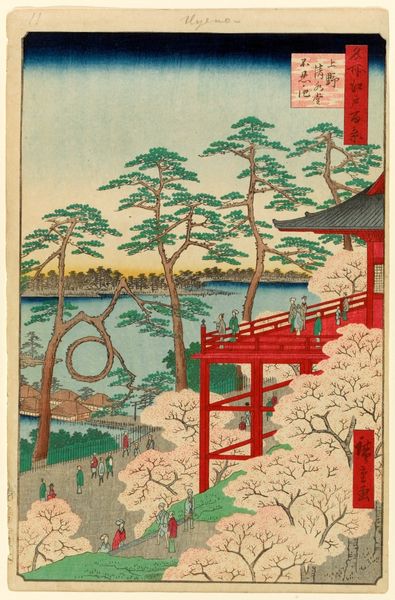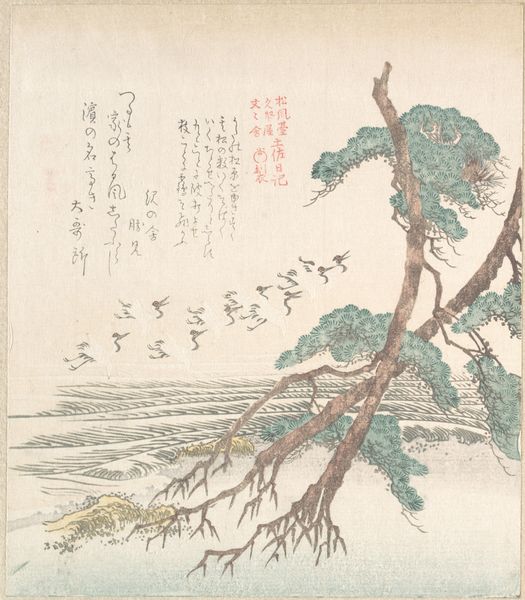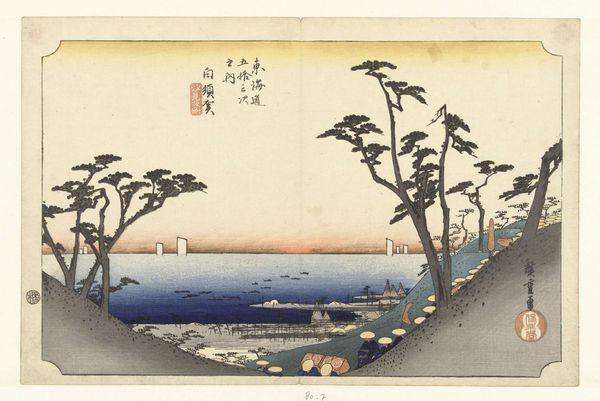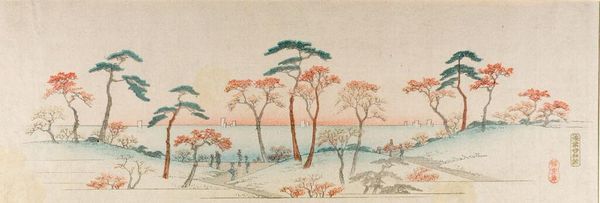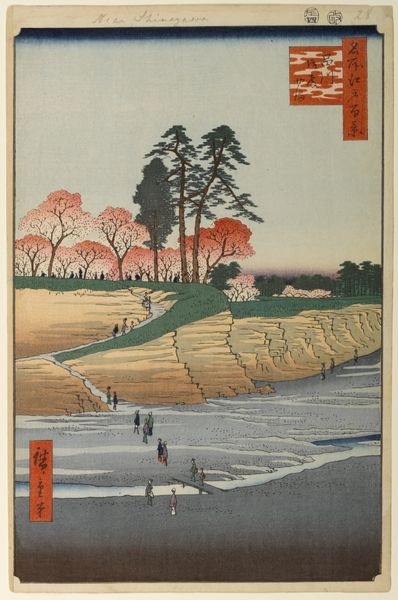
Copyright: Public Domain: Artvee
Curator: Kobayashi Kiyochika's woodblock print, "Arashiyama, Kyoto," created in 1897, offers a serene view. What strikes you first? Editor: That pale blue! It gives a sense of nocturnal calm, that and the soft moonlight feel very pronounced. The long bridge fades into the distance. I wonder what it represented to viewers at the time. Curator: Good question! Kiyochika lived through a period of intense westernization in Japan. His work is often seen as a commentary on these cultural shifts. The "Arashiyama" print exemplifies ukiyo-e tradition – that floating world aesthetic – but also hints at modernity through that bridge in the distance. He’s playing with the representation of nature and progress here, don't you think? Editor: Definitely. There is also this clear compositional structure. The bridge, water, and rocky shoreline divide the space horizontally. The stylized trees leaning into the space creates some asymmetry and break up the flat plane, giving it more movement and tension. How was this work received by his contemporaries? Curator: Kiyochika enjoyed success as a print artist capturing the changing face of Tokyo. He skillfully navigated tradition and modernization. However, like many ukiyo-e artists, he faced challenges adapting to new tastes and technologies in art production. "Arashiyama, Kyoto," while evoking familiar landscape themes, also reveals that tension between celebrating nature and acknowledging the advance of urban life and technology, like that bridge. Editor: Yes, he finds such a strong balance of old and new there in that composition. And now looking closer at this print, the watercolours and woodblock, are able to speak more fully to that aesthetic tension and really highlight the natural versus the new. Curator: Ultimately, this piece serves as a wonderful example of his visual strategies, layering traditional techniques and the changing world during that era. Editor: A great reflection that provokes us to consider how the past, present, and the promise of a modernizing future are expressed side-by-side.
Comments
No comments
Be the first to comment and join the conversation on the ultimate creative platform.

